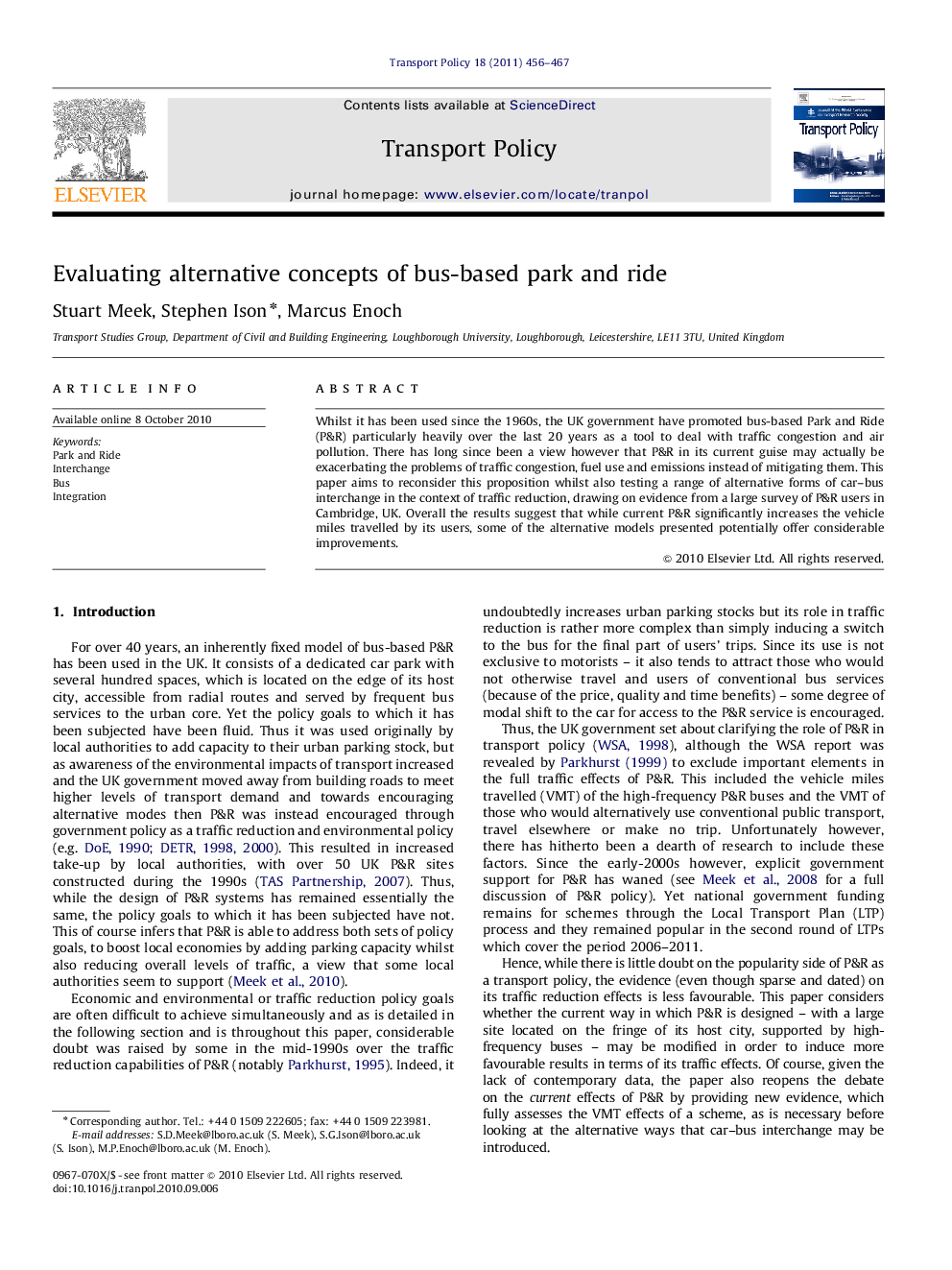| کد مقاله | کد نشریه | سال انتشار | مقاله انگلیسی | نسخه تمام متن |
|---|---|---|---|---|
| 1065472 | 948566 | 2011 | 12 صفحه PDF | دانلود رایگان |

Whilst it has been used since the 1960s, the UK government have promoted bus-based Park and Ride (P&R) particularly heavily over the last 20 years as a tool to deal with traffic congestion and air pollution. There has long since been a view however that P&R in its current guise may actually be exacerbating the problems of traffic congestion, fuel use and emissions instead of mitigating them. This paper aims to reconsider this proposition whilst also testing a range of alternative forms of car–bus interchange in the context of traffic reduction, drawing on evidence from a large survey of P&R users in Cambridge, UK. Overall the results suggest that while current P&R significantly increases the vehicle miles travelled by its users, some of the alternative models presented potentially offer considerable improvements.
Research Highlights
► The UK government have promoted bus-based Park and Ride over the last 20 years as a tool to deal with traffic congestion and air pollution. There has been a view however that P&R in its current guise may actually be exacerbating the problems of traffic congestion, fuel use and emissions instead of mitigating them.
► This paper reconsiders this proposition whilst testing a range of alternative forms of car–bus interchange in the context of traffic reduction, drawing on evidence from a large survey of P&R users in Cambridge, UK.
► Overall the results suggest that while current P&R significantly increases the vehicle miles travelled by its users, some of the alternative models presented potentially offer considerable improvements
Journal: Transport Policy - Volume 18, Issue 2, March 2011, Pages 456–467